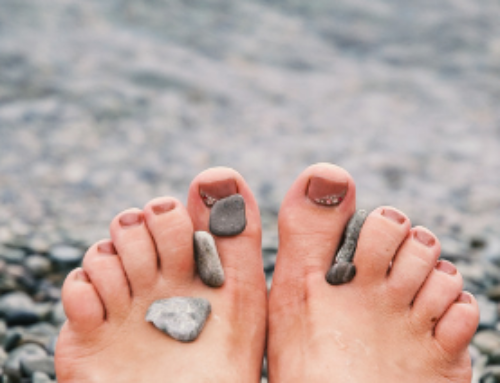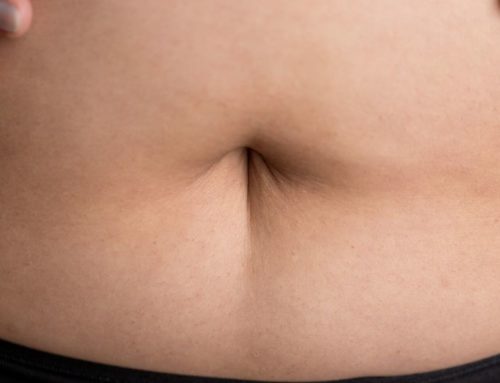The U.S. Food and Drug Administration (FDA) has a designation for substances that are intentionally added to food called GRAS: Generally Recognized As Safe. A number of essential oils, absolutes, and hydrosols have made the GRAS list. But this is where most people stop digging for information and assume that this designation means an essential oil is safe in any application that will be going into their mouth – in a glass of a water, a cup of soup, or on top of a scoop of ice cream. Unfortunately for their internal organs, they couldn’t be more wrong.
GRAS and Food Substances
In order for a food substance to meet GRAS status with the FDA the following four criteria must be met:
- The substance must be recognized as safe by qualified experts.
- The experts need to have the appropriate training and experience to evaluate the substance’s safety.
- Safety is determined via scientific procedures or through a rigorously referenced common use in food prior to 1958.
- GRAS is determined by the conditions of intended use in the food.
The specific data and information that demonstrate safety depend on the characteristics of the substance, the estimated dietary intake, and the population that will consume the substance.
– U.S. Department of Health and Human Services, Food and Drug Administration, Center for Food Safety and Applied Nutrition (CFSAN), December 2004
Determining Dietary Intake with Essential Oils
The conditions of intended use clause is where associations like the Flavor and Extract Manufacturers Association (FEMA), and experts like Fenaroli’s Handbook of Flavor Ingredients come in to provide estimates of safe consumption.
In order for an essential oil to reach GRAS status experts look at:
- toxicology – at what strength does the essential oil become poisonous to a human adult?
- organic chemistry – what is the chemical nature of the essential oil?
- biochemistry – how will the chemistry of the essential oil interact with the chemistry of the human?
- metabolism – what is the path the essential oil will travel through the human body? How quickly is it absorbed and excreted?
- pathology – when the essential oil concentration is strong enough to be poisonous how will it affect the human body? What disease or illness will it cause? Which organs will be most affected by the poisoning?
Example of GRAS Essential Oil Intake
Since GRAS essential oils are intended to flavor a food or beverage let’s look at the concentration that qualified experts have determined for a popular essential oil, Lemon:
 Lemon (Citrus x limon) has a FEMA GRAS determination (Flavor and Extract Manufacturers’ Association D-Limonene Monograph, 1-4, 1991) based on the chemical constituent d-limonene, a terpene, of 100 part per million (ppm) (or 0.01%) usage in non-alcoholic beverages. Limonene ranges from 56-76% (Tisserand-Young 2014) in a batch of cold-pressed Lemon rinds, so let’s say you’ve got 75% limonene in your bottle at home your dose per liter would be 74.8655 milligrams. If you don’t have a chemist’s scale at home you can use the general rule of thumb that an average drop of essential oil weighs between 20-30 milligrams. So to dilute your one drop of Lemon essential oil to achieve the GRAS safety level of 100 ppm you’d need 0.3 liters of lemonade: 74.8655 mg/L x 0.3 = 22.26 milligrams or roughly 1 drop Lemon EO.
Lemon (Citrus x limon) has a FEMA GRAS determination (Flavor and Extract Manufacturers’ Association D-Limonene Monograph, 1-4, 1991) based on the chemical constituent d-limonene, a terpene, of 100 part per million (ppm) (or 0.01%) usage in non-alcoholic beverages. Limonene ranges from 56-76% (Tisserand-Young 2014) in a batch of cold-pressed Lemon rinds, so let’s say you’ve got 75% limonene in your bottle at home your dose per liter would be 74.8655 milligrams. If you don’t have a chemist’s scale at home you can use the general rule of thumb that an average drop of essential oil weighs between 20-30 milligrams. So to dilute your one drop of Lemon essential oil to achieve the GRAS safety level of 100 ppm you’d need 0.3 liters of lemonade: 74.8655 mg/L x 0.3 = 22.26 milligrams or roughly 1 drop Lemon EO.
But as we know from Why essential oils are not water flavoring agents, and Friends don’t let friends drink essential oils, essential oils are fat soluble, not water soluble. So you’d need to add some kind of dispersant to your lemonade to safely distribute that drop in your 0.3 liters so you’re not coating your sensitive internal skin from mouth to rectum or urethra with the equivalent of driveway degreaser.
In commercial settings an essential oil like Lemon would be re-distilled, or folded, to remove some of the constituents and give a higher concentration of other constituents. The end product would deliver a GRAS substance that is sold to the food and beverage industries that wouldn’t require quite the same level of dilution as an essential oil that is intended for aromatherapy (the therapeutic use of essential oils and hydrosols) use. There’s a number of concerns about using strong chemical substances, whether obtained from botanicals or produced in a laboratory, in food and beverages. It’s an interesting discussion and I’d encourage you to bend the ear of your favorite chemist. For some inspirational discussion points here’s some articles and monographs you may wish to read:
- GRAS Flavoring Substances, FEMA (PDF) – includes some good points on flaws around estimating intake and exposure.
- Safety Evaluation of Certain Food Additives, World Health Commission (PDF) – includes info on a variety of botanical constituents, including limonene that we talked about in Lemon above.
- Food additives on the rise as FDA scrutiny wanes, Washington Post – issues around self-regulation are discussed.
Editor’s note: An unfortunate error affected my original calculations in the D-Limonene GRAS referenced in this post. I have corrected this error and sincerely apologize for any inconvenience this may have caused and thank those who helped me find it.









Just to be certain I am doing my conversions correctly, to dilute Lemon EO to a GRAS status, we would need one drop per 1 1/4 cups of dispersant. And since oil and water don’t mix, it must be something with fat, such as full fat milk or half-and-half, yes?
Not that I’m recommending it, of course! This is simply for the sake of covering all angles of this discussion. Thanks for doing the mind-numbing math for us!
Well, if you stick with the idea of adding Lemon essential oil to lemonade you’d need a dispersing agent that also has FDA approval, maybe something along the lines of a synthetic polysorbate or a plant based sorbitol ingredient. Those agents have specific guidelines too based on what the application is.
But yes, if one was quite set on adding Lemon EO to a glass of milk (blech!) as a flavorant it would be a maximum of 1 drop in a 10+ ounce glass of said milk. If you’re keen on attempting to work out the math of other essential oils you’ll need: the molar concentration of the specific constituent (PubChem is a good source), the weight of the product you’re adding it to (lemonade, milk, water), the temperature of the product, and the GRAS ppm guideline (100 ppm in the case of d-limonene). Here’s a handy calculator to plug it all into and get an mg/liter equation: http://www.rapidtables.com/convert/chemistry/ppm-to-mg-per-liter.htm
I’m a professional chef, and we use ***alcohol*** as an approved “FDA dispersant” all the time. Almost all icings would use citrus oils in a much higher concentration than you describe. And yes, we usually use folded oils — which are essentially the same thing with some of the flavorless components removed, but we use Aftelier in frostings and custards. We used citrus essential oils at Escoffier at a concentratration that would be about 2-3 drops per 1oz of grain alcohol. Not sure where you are getting some of this safety information from
David, expressed lemon essential oil would have a regulatory status of 642 ppm in things like baked goods. You wouldn’t need a dispersant for something like frosting since it is lipophilic and would be easy to properly disperse with a whisk or mixer attachment. Your chef association should give you access to FEMA GRAS data or you can easily get your hands on a recent copy of Fenaroli’s Handbook of Flavor Ingredients to access GRAS guidelines. Aftelier’s flavorants are quite lovely, so are her perfumes!
Thanks for the blog post. I am doing a paper for my certification and was having a hard time finding the information on FDA website.
Is their a web site or book that gives safe dilution rates when ingesting an oil in a capsule with almond oil. I have been prescribed to do this as a treatment via a naturopath, but I would like to have a second opinion on its safety.
That would be covered an aromatic medicine pharmacology course, Christine. It would be beyond the scope of a single book or website.
[…] Ah, this old chestnut! In case you’re not already aware, there are two major essential oil brands that claim to be ‘therapeutic grade’. Supposedly, this makes it acceptable to ingest or use them neat on the skin. I’ve actually had one of their “wellness advocates” inform me that my Essential Oil Blending app ‘doesn’t work’ with her oils. Apparently, the purity of her essential oils makes them safe to ingest, which conflicts with the safety advice in my app. You’ll often see reps validating spurious advice on the basis that their essential oils are ‘certified pure therapeutic grade’. Actually, this is nothing more than a self-awarded marketing term. There is no industry standard that defines ‘therapeutic grade’ essential oils. Any 100% pure essential oil is technically therapeutic grade. Obviously, some oils will be of a higher quality than others. But to suggest that all other essential oils are worthless is pure fiction. And while I’m on the subject of ingestion, saying that essential oils are GRAS (Generally Recognised as Safe) does NOT make it safe to casually ingest whole drops on a daily basis (read more about this here). […]
[…] Essential oils and GRAS – What it really means […]
[…] Essential oils and GRAS – What it really means […]
[…] Lemon (Citrus x limon) has a FEMA GRAS determination (Flavor and Extract Manufacturers’ Association D-Limonene Monograph, 1-4, 1991) based on the chemical constituent d-limonene, a terpene, of 100 part per million (ppm) (or 0.01%) usage in non-alcoholic beverages. Limonene ranges from 56-76% (Tisserand-Young 2014) in a batch of cold-pressed Lemon rinds, so let’s say you’ve got 75% limonene in your bottle at home your dose per liter would be 74.8655 milligrams. If you don’t have a chemist’s scale at home you can use the general rule of thumb that an average drop of essential oil weighs between 20-30 milligrams. So to dilute your one drop of Lemon essential oil to achieve the GRAS safety level of 100 ppm you’d need 0.3 liters of lemonade: 74.8655 mg/L x 0.3 = 22.26 milligrams or roughly 1 drop Lemon EO. ~ Amy Kreydin, Barefoot Dragonfly, “Essential oils and GRAS: What it really means” […]
Grateful to find this blog as I am about to embark on the personal use of essential oils. One thing that comes up in the comments regarding use of EO’s is to consult an “aromatherapist”, “herbalist”. Reading online what training is required to be able to hang a sign on your door “clinical aromatherapist” or “herbalist” and treat people seems very close to a few weeks of online courses; based on that, I would never trust an “aromatherapist” to do anything for me except rub my feet. Any advice on the use of a powerful substance should be done by someone who is an MD, PHD, ND, or similar profession that took years of education.
I’ve never studied aromatherapy online, Rose, so I don’t have a point of reference there. I did study at one of Harvard’s teaching hospitals in clinical aromatherapy and that was a 13 month program. I’ve been studying botanical medicine for the past 21 years. Most MDs, PhDs, and NDs do not have aromatic chemistry training or anything beyond a cursory education in aromatherapy. So, when I recommend consulting with an aromatherapist I’m not talking about someone who took an online introductory class over a few weeks or even a few months.
I clicked on those two PDF links above, but I didn’t come across the word “sage”, and I don’t know what multi-syllabic chemical constituents sage contains that would be of concern. I have a bag full of mini potatoes, and another bag of Yukon Gold potatoes, so I’m wondering how many drops of 100% pure sage essential oil I can mix with canola oil so that I can bake the sliced potatoes in it. Then freeze the leftovers. Or should I just coat a toothpick in sage oil, and then swirl the toothpick into a container of canola oil? Or would that still be too much? I also have a container of 100% pure fennel oil, and 100% cinnamon oil, so I would be interested where I can find the “parts-per-million” quantity that would be safe to ingest.
Sounds like you need your own copy of Fenaroli’s Handbook of Flavor Ingredients, Meg! All of these essential oils have some safety concerns based on their chemistry. For example, Salvia officinalis (Garden Sage) essential oil is about 50% thujone, a neurotoxin known to induce seizures. Because of that reason it is banned as a food additive here in the United States. You’d be in food-safe territory with fresh sage from the garden or supermarket since they contain less than 2% volatile oils and most of that is going to evaporate in the oven. Otherwise you’d need to look for a rectified essential oil that has had the thujone removed for it to be FEMA PADMI or JECFA ADI compliant and considered a flavorant.
[…] Essential oils and GRAS: What It Really Means by Amy Kreydin […]
[…] https://www.thebarefootdragonfly.com/essential-oils-and-gras-what-it-really-means/ […]